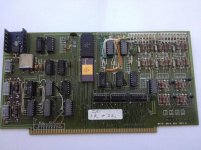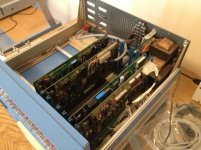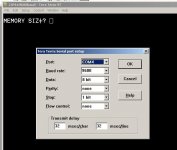kingchops
Experienced Member
After a two year search, I finally managed to get my hands on a MITS 882-SIO serial card for my Altair. This one came from an Altair8800BT, which I now own (see my other post). The card was wired to work on ports 24,26, because the BT that it came from was set up to use the serial port on the turnkey module as the main console, set to port 20. I managed to test it in my 8800 by modifying the serial echo program from the basic manual to work on ports 24,25. This gave a successfull echo using Teraterm on my pc. Being highly motivated at getting a successful echo, I re-jumpered the card to work on the standard port 20. Luckily it was only one jumper wire to set it to the standard 20,22 octal address for MITS software. Back into the machine it went and after some mucking about with terminal settings and I was able to get a consistenly correct echo of all characters through Teraterm. So then I followed the instructions for loading 4k basic. I Followed the directions of the Solviant site:
http://www.solivant.com/altair_bootloaders/index.php?album=altair_bootloaders&pagen=1
and also the good info provided on vingatecomputer.net here:
http://www.vintagecomputer.net/browse_thread.cfm?id=318
And after a couple of attemps success! I've now managed to get 4k basic running on my Altair twice, with only a single 4k memory card installed.
The MITS 88-2SIO:

Here it is connected the Altair 8800 and via serial cable to the pc:

Here's the response I got when I sent the 4k basic tape file:

Then made the terminal adjustments from 8 databits and no parity, to 7 databits and even parity:

http://www.solivant.com/altair_bootloaders/index.php?album=altair_bootloaders&pagen=1
and also the good info provided on vingatecomputer.net here:
http://www.vintagecomputer.net/browse_thread.cfm?id=318
And after a couple of attemps success! I've now managed to get 4k basic running on my Altair twice, with only a single 4k memory card installed.
The MITS 88-2SIO:

Here it is connected the Altair 8800 and via serial cable to the pc:

Here's the response I got when I sent the 4k basic tape file:

Then made the terminal adjustments from 8 databits and no parity, to 7 databits and even parity:

Last edited:
